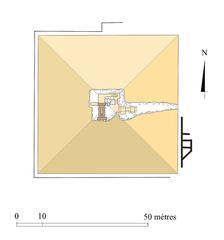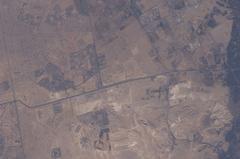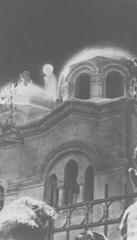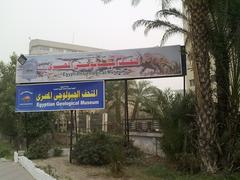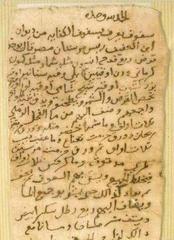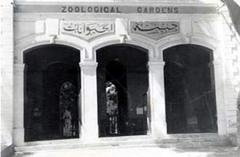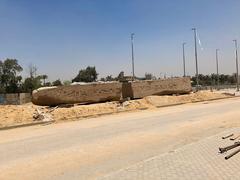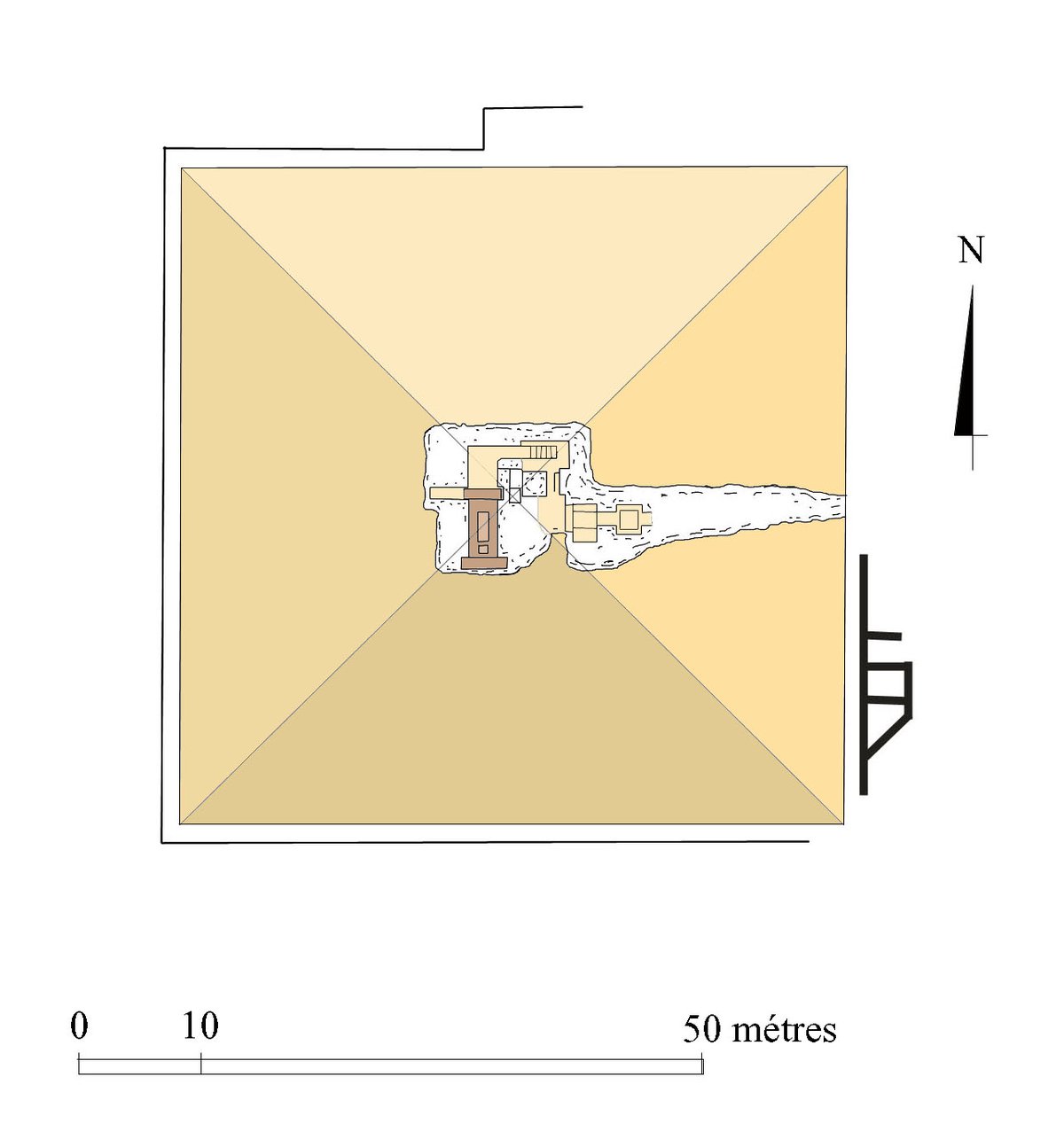
Pyramid of Ameny Qemau: Visiting Hours, Tickets, and Historical Significance in Giza Governorate, Egypt
Date: 15/06/2025
Introduction
Tucked away in the storied Dahshur necropolis of Egypt’s Giza Governorate, the Pyramid of Ameny Qemau is a remarkable yet often overlooked monument from the Middle Kingdom, specifically the 13th Dynasty (circa 1790 BCE). Unlike the iconic pyramids of Giza, Ameny Qemau’s modest and now-ruined pyramid reflects an era of political flux, economic constraint, and evolving religious beliefs. Despite its size and condition, this pyramid stands as a vital link in Egypt’s long tradition of royal burial and religious symbolism, offering a unique glimpse into a transitional period in ancient Egyptian history.
For today’s visitors, the Pyramid of Ameny Qemau provides both archaeological intrigue and an authentic, off-the-beaten-path adventure. Recent technological advances such as ground-penetrating radar and robotic probes have uncovered new details about the site’s structure and contents, including a significant quartzite sarcophagus and funerary artifacts. While the site’s terrain is challenging and facilities are basic, guided tours are available to enhance your understanding of its historical context. With proximity to other Dahshur pyramids—the Bent, Red, and Black Pyramids—Ameny Qemau’s tomb is a compelling addition to any Egypt itinerary.
Whether you are a history enthusiast or a curious traveler, a visit to the Pyramid of Ameny Qemau offers an intimate encounter with Egypt’s dynastic legacy. Plan your visit with up-to-date information on tickets, accessibility, and guided tours to make the most of your experience. (wonders-of-the-world.net, egymonuments.gov.eg, egyptindependent.com, smithsonianmag.com)
Contents Overview
- Introduction
- Historical Context
- Middle Kingdom Pyramid Building Revival
- Political and Religious Significance
- Construction and Architectural Features
- The Decline of Pyramid Construction
- Archaeological Significance and Conservation
- Ameny Qemau in the Dahshur Necropolis
- Recent Archaeological Discoveries
- Renewed Excavations and Finds
- Conservation and Technological Advances
- Visitor Information
- Visiting Hours and Tickets
- Accessibility and Facilities
- How to Get There
- Guided Tours and Events
- Nearby Dahshur Attractions
- Photographic Spots
- On-Site Experience and Practical Tips
- Preservation Challenges
- Frequently Asked Questions (FAQ)
- Conclusion and Recommendations
- Sources and Further Reading
Historical Context of the Pyramid of Ameny Qemau
The Middle Kingdom Revival of Pyramid Building
The Pyramid of Ameny Qemau represents the Middle Kingdom’s attempt to revive pyramid construction after the grandeur of the Old Kingdom. Built during the 13th Dynasty, a time marked by political instability and short reigns, this pyramid was constructed with more modest resources, using a mudbrick core encased in limestone. The site at Dahshur was a deliberate choice, aligning Ameny Qemau’s final resting place with earlier, illustrious pharaohs (wonders-of-the-world.net).
Political and Religious Significance
Although the pharaoh’s absolute power had diminished by the Middle Kingdom, pyramid construction remained a statement of royal divinity and legitimacy. The pyramid’s design and orientation reinforced the king’s divine status and his journey to the afterlife. The form symbolized the primeval mound of creation, and the sloping sides were associated with the sun’s rays, linking the monarch to the gods (wonders-of-the-world.net).
Construction and Architectural Features
- Location: The pyramid lies in southern Dahshur, near the southeast rim of ancient Lake Dahshur (mapcarta.com).
- Dimensions: Originally about 35 meters high with a 52-meter square base, constructed primarily of mudbrick and limestone (HeritageDaily).
- Substructure: The internal layout featured a descending corridor leading to a burial chamber carved from a single block of quartzite. Despite robust security features, the tomb was looted in antiquity; only fragments remain.
- Mortuary Temple: Adjacent mudbrick temples once supported funerary rituals, though little survives today (wonders-of-the-world.net).
The Decline of Pyramid Construction
The Ameny Qemau pyramid marks one of the last royal pyramids of Egypt. After the 13th Dynasty, Egypt entered a period of political fragmentation, and the tradition of pyramid building faded, replaced by hidden tombs in the Valley of the Kings.
Archaeological Significance and Conservation
Despite its ruinous state, the site offers critical insights into Middle Kingdom funerary traditions, architectural practices, and the social and political shifts of the time. Modern preservation efforts focus on stabilizing the remaining masonry and mitigating environmental threats (ancientpedia.com).
Ameny Qemau in the Dahshur Necropolis
The presence of Ameny Qemau’s pyramid among the Bent, Red, and Black Pyramids provides a unique perspective on the evolution of Egyptian pyramid architecture and the enduring sacred landscape of Dahshur (mapcarta.com).
Recent Archaeological Discoveries
Renewed Excavations and Finds
Ongoing excavations by Egyptian and international teams have revealed significant finds, including a large quartzite sarcophagus and funerary items like canopic jars and faience amulets. Inscriptions indicate the pyramid may have been reused for a royal princess, Hatshepset, reflecting the fluidity of burial practices during unstable times (smithsonianmag.com, HistoryThings).
Conservation and Technological Advances
Robotic probes and 3D mapping have enabled detailed documentation of the site’s internal structure, supporting both research and preservation. These advances help balance tourism with the need for conservation, ensuring the site’s survival for future generations.
Visitor Information
Visiting Hours and Tickets
- Hours: Open daily from 8:00 AM to 5:00 PM. Hours may vary due to conservation work; check with the Egyptian Ministry of Tourism and Antiquities for updates.
- Tickets: General admission for Dahshur sites (including Ameny Qemau) is approximately 100 EGP for foreign tourists, with discounts for students and children.
Accessibility and Facilities
- The site is partially accessible. Uneven ground and minimal infrastructure may be challenging for visitors with mobility issues.
- Basic amenities are available near the entrance, but facilities are limited. Bring sun protection, water, and sturdy shoes.
How to Get There
- By Car: About 40 km south of Cairo. Private taxis and organized tours are the best options.
- Public Transport: Not recommended due to limited service.
Guided Tours and Events
- Guided tours are available on-site or through Cairo-based operators, often including other Dahshur pyramids.
- Special events and archaeological exhibitions occasionally take place; check local listings for details.
Nearby Dahshur Attractions
While at Dahshur, visit:
- Bent Pyramid (unique bent profile)
- Red Pyramid (first smooth-sided pyramid)
- Black Pyramid of Amenemhat III
These sites are close together and offer a comprehensive overview of Egypt’s pyramid-building tradition.
Photographic Spots
Sunrise and sunset provide optimal lighting for photography. Drones may be permitted with special authorization. Always respect site regulations.
On-Site Experience and Practical Tips
- Arrive early to avoid the heat and crowds.
- Bring essentials: Water, snacks, hat, and sunscreen.
- Footwear: Wear sturdy shoes for uneven terrain.
- Photography: Respect site rules and avoid touching fragile remains.
- Guidance: Consider a guided tour for deeper historical context.
Preservation Challenges
The pyramid is threatened by erosion, sand accumulation, and lack of comprehensive conservation. Preservation efforts focus on stabilizing what remains and preventing further damage (HeritageDaily).
Frequently Asked Questions (FAQ)
Q: What are the visiting hours?
A: 8:00 AM to 5:00 PM daily, but check for updates due to possible conservation activities.
Q: How much are tickets?
A: Around 100 EGP for foreign tourists; student and children discounts available.
Q: Is it accessible for people with disabilities?
A: Accessibility is limited due to uneven terrain.
Q: Are guided tours available?
A: Yes, both at the site and via tour operators.
Q: What else can I see nearby?
A: Visit the Bent, Red, and Black Pyramids—all within Dahshur.
Conclusion and Recommendations
The Pyramid of Ameny Qemau is a vital yet often overlooked monument that enriches our understanding of Egypt’s Middle Kingdom. Its modest size, architectural innovations, and archaeological discoveries make it a rewarding site for those seeking to go beyond the major tourist destinations. Combine your visit with other Dahshur pyramids for a deeper appreciation of Egypt’s funerary traditions and architectural evolution.
Stay updated through the Egyptian Ministry of Tourism and Antiquities or Egypt Independent, and consider guided tours for the best experience.
Visual Media
Images are optimized with alt tags for SEO and accessibility.
Internal Links
External Links
- Egyptian Ministry of Tourism and Antiquities
- Egypt Independent
- Smithsonian Magazine on Ameny Qemau Pyramid
- Britannica on Pyramids of Giza
- Mapcarta: Dahshur Necropolis
- Impact of pyramids on tourism
- HistoryThings on Egyptian Princess Burial
- Academia.edu Layman’s Guide
- Egypt Mythology Cultural Significance
Sources and Further Reading
- Pyramid of Ameny Qemau Visiting Hours, Tickets & Guide to Dahshur Historical Sites
- Visiting the Pyramid of Ameny Qemau: History, Tickets, and Travel Tips
- Egypt to announce significant archaeological discovery in the pyramids area in 2025
- Egyptian princess may have been buried in newly discovered pyramid
- Pyramids of Giza
- Mapcarta: Dahshur Necropolis
- Impact of pyramids on tourism
